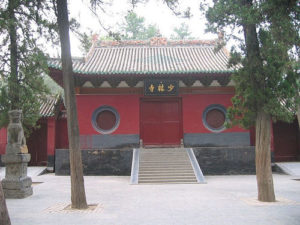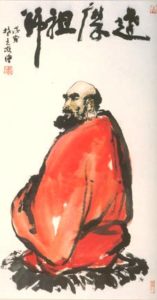“The mind is the root from which all things grow if you can understand the mind, everything else is included.”
Bodhidharma
 In a recent conversation I had with my teacher, Shifu Guolin of Shaolin Temple Overseas Headquarters, he mentioned a couple of misconceptions regarding the popular narrative of Shaolin kungfu history. He believes that it undermines the true benefits that practicing Shaolin internal and external martial arts can offer people. Shifu would like everyone to know this information so, I wrote this post to correct a couple of these distortions.
In a recent conversation I had with my teacher, Shifu Guolin of Shaolin Temple Overseas Headquarters, he mentioned a couple of misconceptions regarding the popular narrative of Shaolin kungfu history. He believes that it undermines the true benefits that practicing Shaolin internal and external martial arts can offer people. Shifu would like everyone to know this information so, I wrote this post to correct a couple of these distortions.
What is Shaolin Kungfu?
A lot of people think that Shaolin kungfu is synonymous with martial arts but this is not quite true. Rather, Shaolin kungfu is Chan (Zen) Buddhism which is practiced through many traditions that originated in Chinese culture. A few of these are meditation, calligraphy, the Chinese tea ceremony and martial arts. When Bodhidharma (aka Damo) arrived at the Shaolin Temple, the Chan Buddhism that he brought from India evolved into a new style of Buddhism called Chinese Chan Buddhism. This new style of Chan Buddhism combined Chan meditation with martial arts as well as other forms of traditional Chinese disciplines. This is why our martial art is named Shaolin Kungfu.

Everyone knows that kungfu means skill from practice in the Chinese language but the origins of its meaning actually started in Buddhism. It originally referred to the stillness of a practitioner’s heart and mind. The more still the heart and mind, the more that wisdom would be allowed to deepen.
Nowadays, when people speak of kungfu, they have forgotten about it’s original meaning from Chan Buddhism. It is important to remember that the original purpose of practicing kungfu is to purify the heart and mind which means to overcome a mind busy with excessive thoughts. The Chinese call this busy mind, monkey mind (心猿) or mind like a galloping horse (意马). When a practitioner has tamed her monkey mind, we can say that she has good kungfu which can used anywhere whether its martial arts, calligraphy, meditation, Chinese tea ceremony etc.
Did Bodhidharma Bring Martial Arts to China?
Another common misconception that Shifu Guolin would like to correct is the notion that Damo introduced martial arts and qigong to China and the Shaolin monks. However, the monks were already practicing martial arts for survival long before Damo arrived. Furthermore, the practice of qigong is rooted in Daoism which began centuries before Damo’s birth. What Damo did teach them however, is to use the method of Chan meditation to practice the Chinese martial arts and qigong that they were already practicing. This became know as Shaolin Kungfu which we can certainly say began with Damo.
Why do some of the Shaolin forms (i.e Damo’s Sword, Lohan Quan, Bodhidharma Yi Jin Jing) use Bodhidharma’s (monikers Damo, Luohan) name?
Bodhidharma, Damo and Luohan represent Chan Buddhism so we are reminded of how Shaolin forms are supposed to be practiced. In other words, Damo did not create or teach the famous Bodhidharma Yi Jin Jing qigong form. Instead, we are reminded that the Yi Jin Jing qigong form should be practiced with the Chan Buddhism method. This is how Shaolin Kungfu evolved into its position in Chinese culture.
